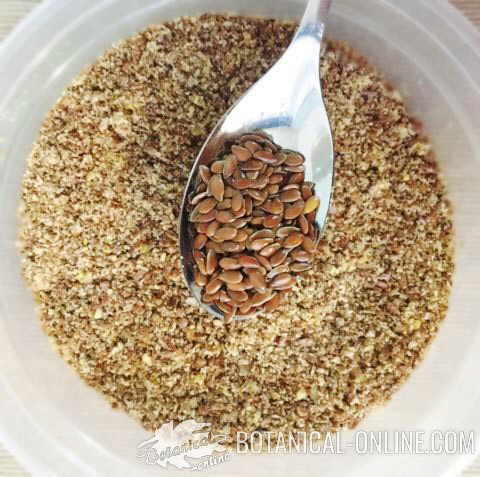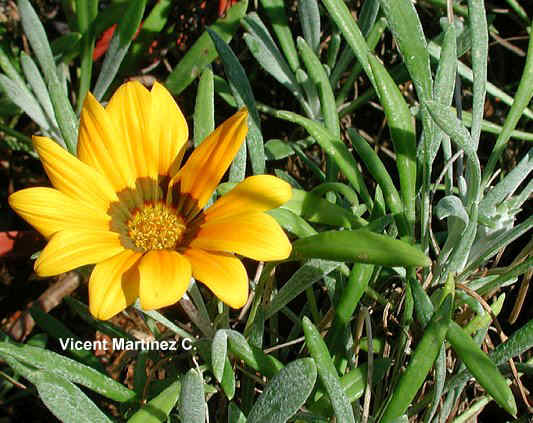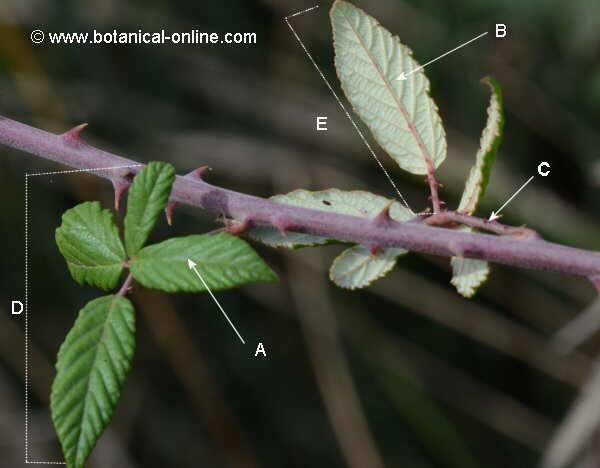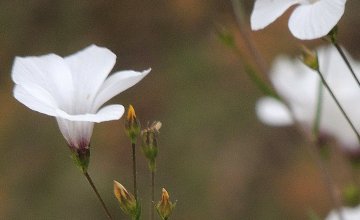Contents
How to grow chrysanthemums
CHRYSANTHEMUN CULTIVATION
Cultivated crhysanthemums
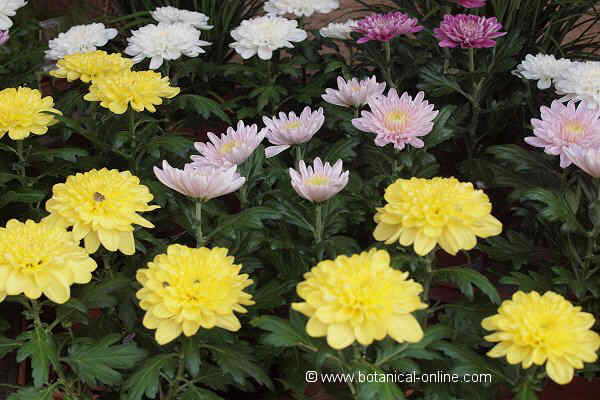
Photo of chrysanthemums
The cultivated specimens have grown much larger flowers than the wild ones, many with floral heads single, double, semi-double or a ball and a wider range of colors that wild species from which they come. (White, yellow, pink, red, gold, purple, pale violet, etc. Almost all colors except blue). Those sold in florist’s can have flowers during the whole year because they are forced to bloom. Otherwise, chrysanthemums bloom from autumn to early winter.
They can be forced to advance flowering by means of covering them, so that they receive less hours of light. This will mimic the natural cycle. Keep in mind that this plant blooms in the fall, when the day is short, there is not much light and the night is very long.
Although many of chrysanthemums are perennial, they are usually grown as annuals indoors, so that once flourished, they must be discarded. Grown outdoors, they can be grown as perennial shrubs in large containers or directly into the soil, reaching up to 1 meter in height. When grown in small pots, they usually grow no more than about 40 cm. A chrysanthemum is the flower that forms the national emblem of Japan.
 Chrysanthemum. Irrigation
Chrysanthemum. Irrigation
Chrysanthemums always need to have a moist substrate. However, we must prevent them to become swamped which would result in root rot and fungus growth. When dry, they lose the flowers and it is very difficult to re-bloom them again.
In summer and very dry climates, one should monitor that they always maintain the necessary humidity. The best way to irrigate them during summer is to enter the pot in a container with water until the soil is well soaked. Subsequently, we will place it on a plate and let it drain well. We must be careful to empty the dish under the pot completely, so that no water remains below the pot.
When grown indoors, in warm weather and low humidity, or in winter when heating is on, we should spray it. We will use warm soften water or, if possible, rainwater.
Grown outdoors in large containers or in the ground, they do not need watering unless they are subjected to a period of drought.
Chrysanthemum. Uses
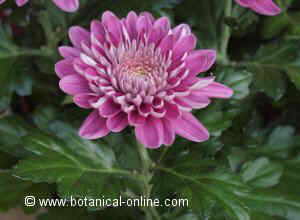
Photo of chrysanthemum
They are mainly used as garden flowers or as cut flowers. Grown as annuals indoors.
 Chrysanthemum. Environment and exposure
Chrysanthemum. Environment and exposure
Chrysanthemums prefer mild climates with average temperatures between 16 and 18 º C. They can hold up night temperatures up to 7 º C. Frosting spoils them, although they may re-sprout after frost. Under 7 ° C leaves turn yellow.
Grown indoors, they should be located in a bright, well ventilated place but out of drafts. If light is poor, flower buds do not open and flowers that are already opened quickly wither and fall.
By late spring, it is better to move them outdoors until late September. Thus the flowering lasts longer.
When grown outdoors, they can be sited in direct sunlight in areas of mild climate. However, we must bear in mind that sunlight should not be too strong in order no to burn the leaves.
In mild weather locations, placing them directly at the sun will provide a lasting flowering. In warmer sites, place them in a place with lots of light. Direct sunlight, especially facing south, can cause damage.
Some of them, such as Chrysanthemum indicum, do not tolerate shade. Others, such as Chrysanthemum tricolor, can be grown in semi-shade.![]()
Chrysanthemum. Reproduction and care
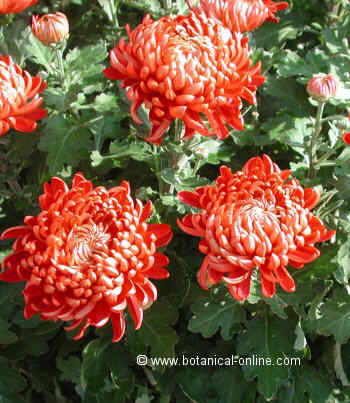
Chrysanthemums can be reproduced from seeds sown directly in its final location. Germination takes place after 10 or 20 days, holding an average temperature of 15 ° C. In warmer weather locations, they can be sown in the fall.
Chrysanthemums can also be reproduced by cuttings during the month of March. To do this, cut healthy green stem cuttings about 6 or 7 cm in length. Remove the lower leaves, introduce them for some time in growth hormones, and plant them in a bed made with sand and peat. Water thoroughly and let them to root while maintaining a constant temperature of 15 ° C. The transplant has to be carried out from mid to late spring. Flowering occurs in mid to late autumn.
Keep in mind that only those plants propagated by cuttings that are grown outdoors usually bloom. For indoor cultivation one should use seeds or, better, buy specimens grown in gardens with flowers or about to bloom.
What mums should we choose?
We will choose healthy individuals, those that contain some flowers already open and the flower buds about to bloom. This is easily distinguished because you can already see the future colors of the petals at the buttons.
How to get abundant flowering?
In addition to the conditions of watering and adequate light, viewed above, they can produce a more abundant flowering if you pinch the ends of the young shoots in spring or cut some flowers when the plant has flowered.
The technique of pinching, besides stimulating flowering, can mold the shape of the plant causing it to grow more rounded and uniform, less gangly and awkward. To do this, remove the terminal bud of the stem “pinching ” it with the thumb nail pressing on your index finger. In this way the plant ceases to grow vertically and does so across from new buds that arise on the sides of the pinched stem.
Cut flowers are very useful for interior decoration. They provide a good aroma and they are very long lasting.
It is recommended to cut all the stems of the plant after flowering, leaving only a few inches from the ground. By spring, it produces new shoots that will result in a plant with lots of energy, more uniform and abundant flowering in autumn and winter.
 Chrysanthemum. Soil and fertilization
Chrysanthemum. Soil and fertilization
Chrysanthemums prefer slightly acidic soils with a pH between 5.5 and 6.5. They need to have a good drainage to prevent waterlogging. They require a good level of nitrogen and potassium.
Grown indoors, it is only necessary to apply universal garden fertilizers. While blooming, they must be fertilized every 2 weeks.
![]() More information on chrysanthemums.
More information on chrysanthemums.

 Chrysanthemum. Irrigation
Chrysanthemum. Irrigation